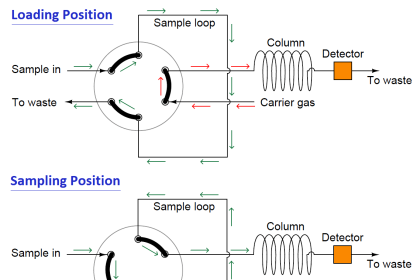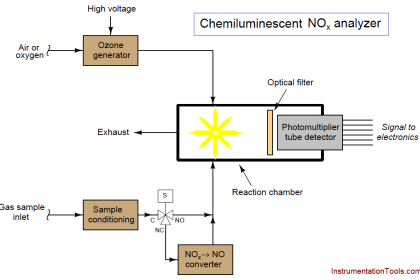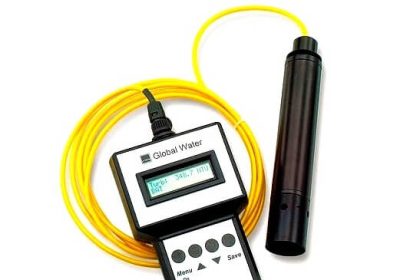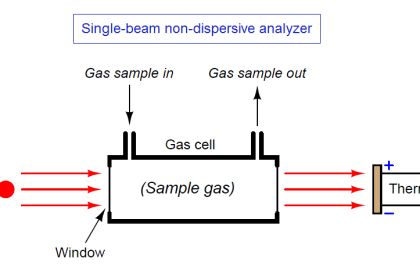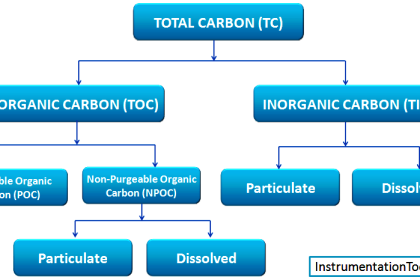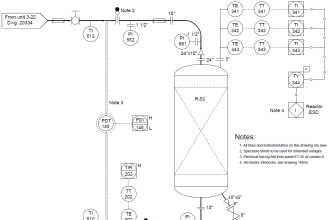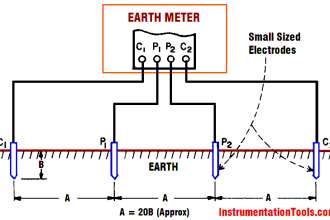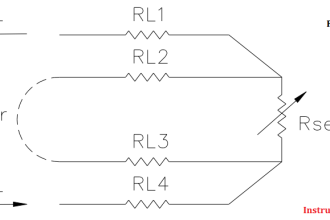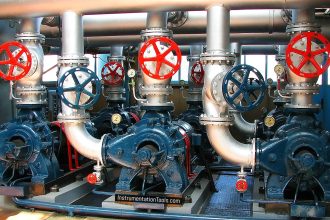We have many technologies available for oxygen gas measurement in industrial applications. Some of them are discussed in this article.
A colorless, odorless gas, oxygen makes up approximately 21% of the Earth’s atmosphere. It is essential to human life, and so is vital to many medical gas applications, as well as playing an essential part in many industrial process reactions.
Within the industry, it has a wide range of uses, including the production of metals and plastics. Many manufacturing processes rely on the use of oxide compounds, so an extensive variety of applications depend upon oxygen measurements for process control, safety, and efficiency.
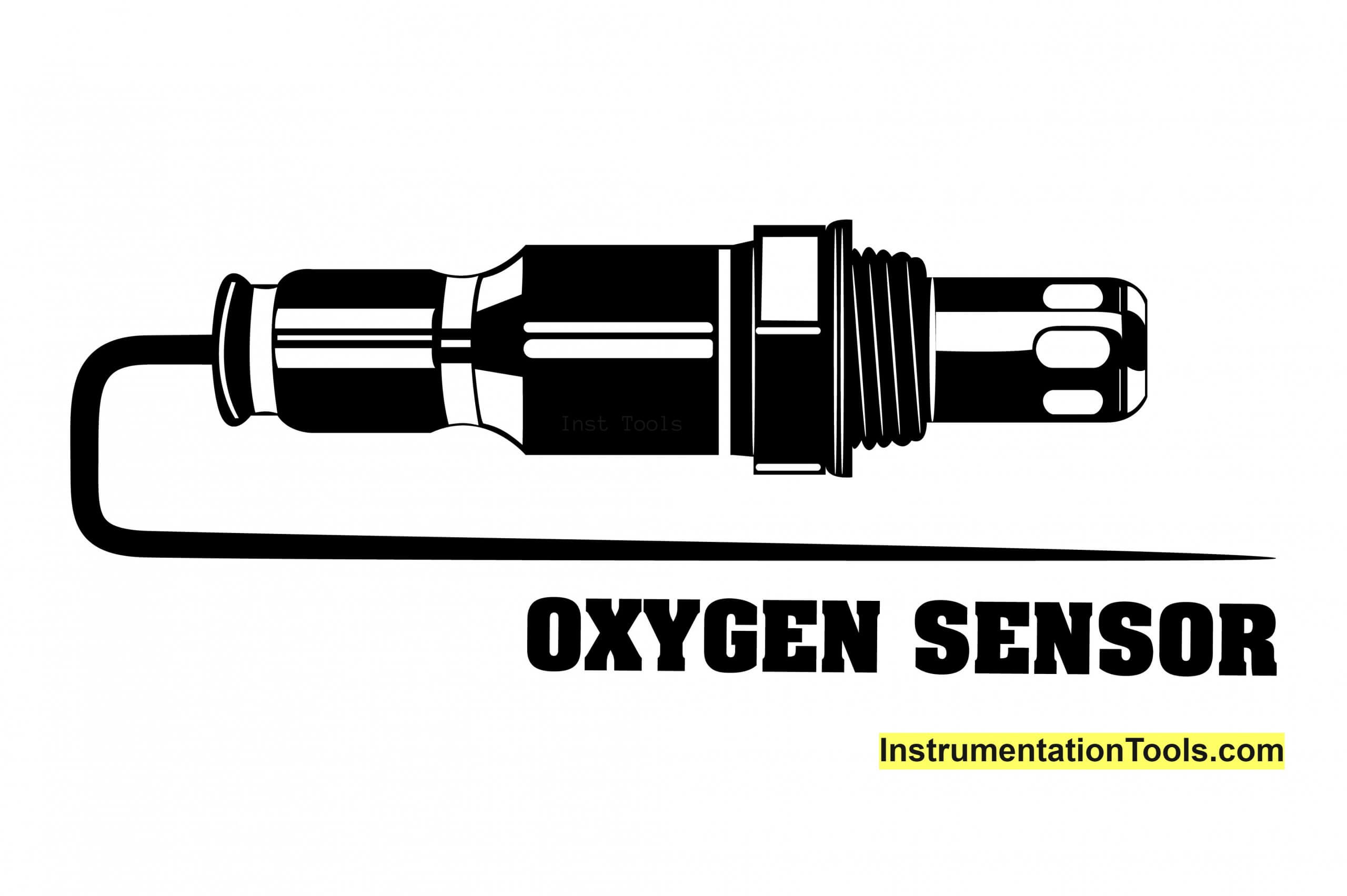
Also, while oxygen is not harmful to the environment, it may be necessary to monitor oxygen emissions as part of a continuous emissions monitoring system.
There are a number of different sensing technologies available for the measurement of oxygen, and selecting the most appropriate solution depends on several factors, including application conditions and the measurement range required.
Zirconia Oxygen Measurement
A long-time solution trusted by industries around the world, Zirconia – also known as zirconium oxide – is a reliable oxygen sensing technology capable of providing measurements at parts-per-million (ppm) and percentage levels within in-situ combustion processes.
The typical Zirconia sensor consists of a cell made of ceramic zirconium oxide, stabilized with an oxide of yttrium to form a lattice structure. The measure and reference sections are covered with catalytic, porous, electrically conductive coatings that serve as electrodes on both sides of the lattice barrier between the sample and reference gas volumes.
At raised temperatures, the lattice allows the movement of negatively charged oxygen ions, which are formed at the catalytic electrodes at a rate determined by temperature and the difference in the oxygen partial pressures of the sample gas and the reference gas.
The passage of these ions produces a voltage across the electrodes – the magnitude of this is a logarithmic function of the ratio of the oxygen partial pressures of the sample and reference gases.
Since the partial pressure of the reference gas is predetermined, the voltage produced by the cell indicates the oxygen content of the sample gas.
One advantage of the Zirconia sensor is that it can be paired with a thick film catalytic sensor in the same analyzer for an all-in-one combustion control solution.
In some applications where the gas sample contains hydrocarbons, measurement errors may occur; in these cases, a Paramagnetic or TDL sensor may be recommended for the oxygen measurement instead.
Coulometric Oxygen Measurement
Coulometric sensing is based on a simple, non-depleting process that responds quickly to changing oxygen levels. It delivers the low-level detection that is essential for ultra-high-purity gas applications, such as the production of electronics-grade gases.
Coulometric technology enables the measurement of oxygen at percent or ppm levels. It is non-depleting, so there is no need to replace the cell periodically. It also avoids the false low readings associated with standard electrochemical sensors.
The sensor operates through a simple Coulometric process, where oxygen from the sample gas is reduced to hydroxyl ions at the sensor cathode. The resulting current flow is proportional to the oxygen content in the gas, and the processed signal can be displayed in ppm or parts-per-billion (ppb) units of oxygen.
Coulometric sensors respond very quickly to changing oxygen concentrations. For instance, a 0-1,000ppm range sensor can be exposed to air and in less than a minute will measure <10ppm on pure nitrogen. This is a great benefit for users who have upset-prone applications.
Additionally, the performance of the sensor is unaffected by reasonable changes in flow rate.
Because the non-depleting sensor is not consumed when exposed to oxygen, it has a long lifespan and does not require a purge gas to protect it when not in use.
Paramagnetic Oxygen Measurement
Based on oxygen’s innate magnetic properties, Paramagnetic technology measures the gas’s concentration at percentage levels, with fast, accurate, and sensitive results.
A typical Paramagnetic cell is made up of two nitrogen-filled glass spheres, mounted within a magnetic field, on a rotating suspension, with a centrally-placed mirror.
The light shines on the mirror and is reflected onto a pair of photocells. Oxygen is naturally Paramagnetic, so it is attracted to the magnetic field, displacing the glass spheres and causing suspension rotation, which is detected by the photocells.
Current is applied through a feedback coil present in the magnetic field to provide sufficient torque to return the suspension to its original position. The magnitude of this current is directly proportional to the oxygen present in the sample gas mixture.
Unlike electrochemical sensing technologies, a Paramagnetic cell never needs changing and its performance never deteriorates over time, reducing ongoing maintenance requirements and delivering a long operational life.
Paramagnetic sensing can be used alongside Infrared sensing technologies in important industrial processes such as air separation units and continuous emissions monitoring systems.
In a robust analyzer, it is suitable for operation in hazardous process conditions, but can be affected by significant levels of movement and vibration, and also requires careful sample conditioning to protect the sensor and ensure an accurate measurement.
Tunable Diode Laser Oxygen Measurement
A non-contact, non-depleting sensing technology, Tunable Diode Laser (TDL) sensors offer a fast-response, accurate measurement that is highly specific to the gas of interest.
TDL analyzers use a single-line “monochromatic” spectroscopic technique that offers highly stable calibration, a continuous, fast, in-situ measurement, and the avoidance of optical cross-interference from other gases.
The TDL system consists of a laser light source, transmitting optics, an optically accessible absorbing medium, receiving optics, and detector(s).
The signal information is held in the gas absorption line shape, which is obtained by scanning the laser wavelength over the specific absorption line. This causes a reduction of the measured signal intensity, which is detected by a photodiode and used to determine the gas concentration and other properties.
Some TDL analyzers use a second harmonic detection (2f) modulation technique that delivers greater accuracy, sensitivity, and reliability of measurement, especially in low ppm-level measurements.
TDL sensing is susceptible to a range of environmental factors that must be compensated for, including path length variation, window purge gas effects, optical interferences, and temperature and pressure changes.
Conclusion
Application knowledge and expertise are required to select the optimum oxygen measurement technology for a particular application. The right sensor is only one component.
Using the best sampling system, applying advanced analytical software processing, and housing it within a suitable casing – essential for hazardous area applications, such as those in high temperatures – are all key considerations.
Choosing the right oxygen sensing solution for your process is critical to achieving the best results. Partnering with a gas analysis expert, such as Servomex, is a great way to obtain the best-fit solution.
Servomex is an acknowledged expert in oxygen measurement, and supplies the widest selection of gas analysis technologies, making it easy to find the right option for your application. Visit servomex.com for more information.

